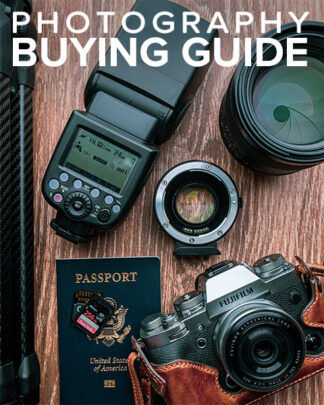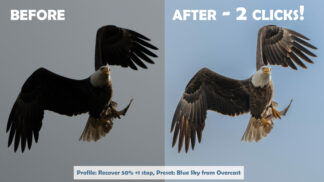Landscape photography captures the world around you. Though you don’t necessarily need any expensive camera gear for landscape photography, it can be extremely demanding on the photographer. Here’s a video that will get you started:
Panoramas and Image Averaging
If you can’t spend a lot, or if you’d rather spend your money on travel than gear, here’s a video that shows you how any cheap camera can beat the world’s greatest gear–given enough patience:
Waterfalls
Like any moving subject, capturing the essence of water requires carefully selecting your shutter speed. Using a high shutter speed seems to freeze water, isolating individual droplets. Longer shutter speeds blur the movement of water, creating a soft, silky look. For streams, rivers, and waterfalls, a longer shutter speed usually creates a better picture. For oceans and larger bodies of water, you might want to use a short shutter speed to catch waves in motion. When you want to blur moving water, use a shutter speed of at least one or two seconds. Naturally, because you’re using a slow shutter speed, you’ll absolutely need to use a tripod. Unless you’re in a really dark forest, this will probably cause your photo to be overexposed (though a little overexposure can be okay). To compensate for that, use the lowest ISO speed your camera supports, and the highest f/stop number your lens allows. If your photo is overexposed even with a low ISO speed and small aperture, consider using a neutral density (ND) filter, also known as a stop-down filter. ND filters block incoming light uniformly, reducing the exposure by as much as several stops. A 0.3 ND filter blocks 30% of the incoming light, reducing your exposure by about one-third of a stop. A 0.6 ND filter blocks 60% of the incoming light, reducing your exposure by a little over one stop. A 0.9 ND filter blocks 90% of the incoming light, reducing your exposure by a little more than 3 stops. If you’re in the habit of putting on a polarizer every time you go outdoors, take it off before you take a picture of water. Polarizers block reflections. In the case of water, they block the sunlight glinting off the surface, removing any ripples and depth from the picture. If you’re shooting a waterfall and you absolutely need a slower shutter speed, and you don’t have an ND filter, you can try using your polarizing filter. They block about two stops of light, and at a very long exposure, enough reflected light will still get through the filter to show the waterfall as white.
 Want more? There’s an entire chapter dedicated to landscapes in our book Stunning Digital Photography. Plus, it teaches all the fundamentals you’ll need to know. Here’s some more free content from this website:
Want more? There’s an entire chapter dedicated to landscapes in our book Stunning Digital Photography. Plus, it teaches all the fundamentals you’ll need to know. Here’s some more free content from this website:





